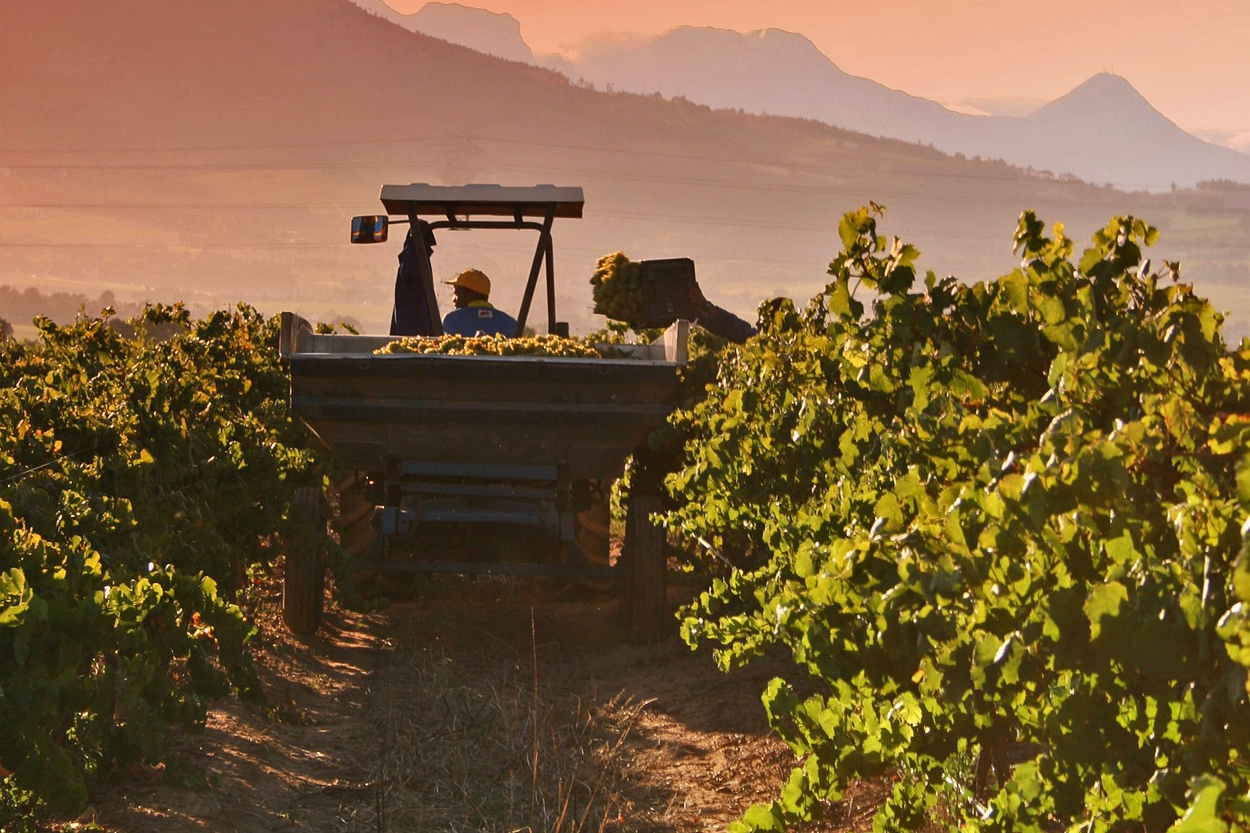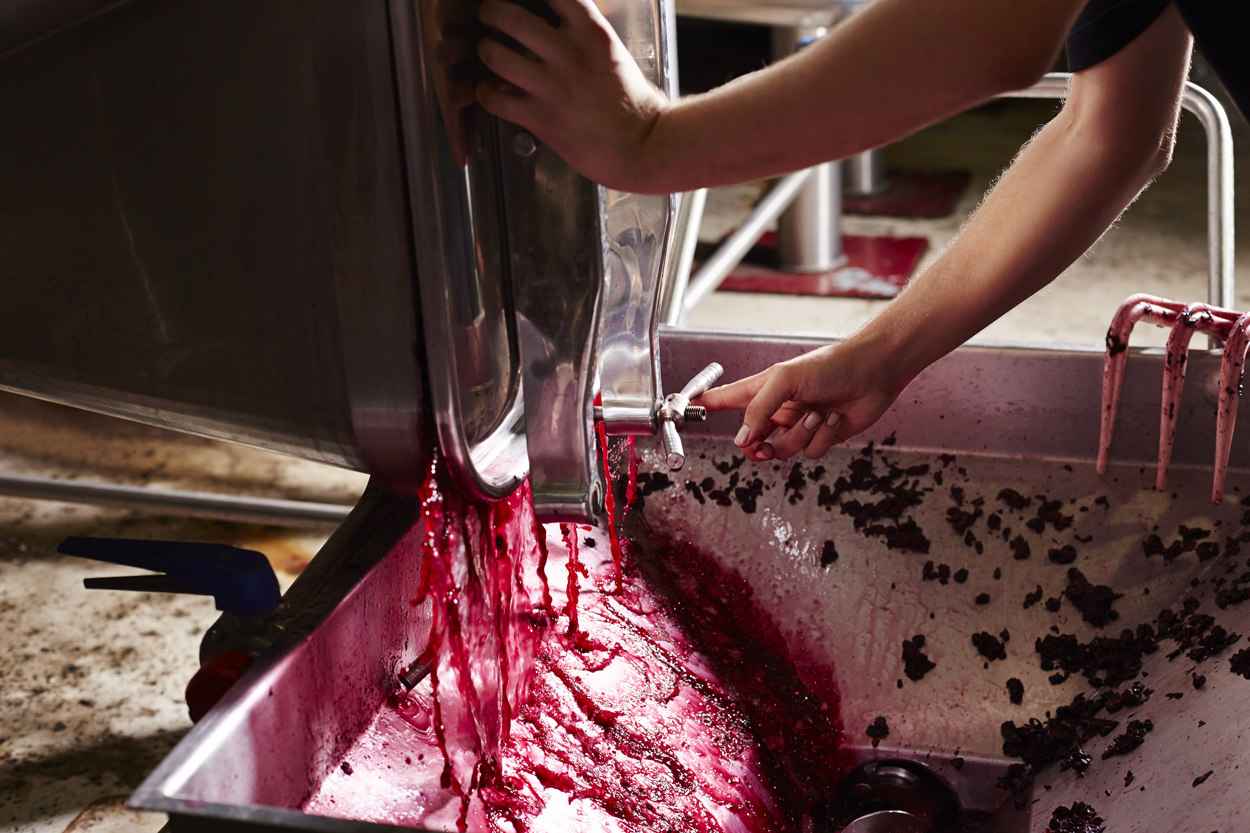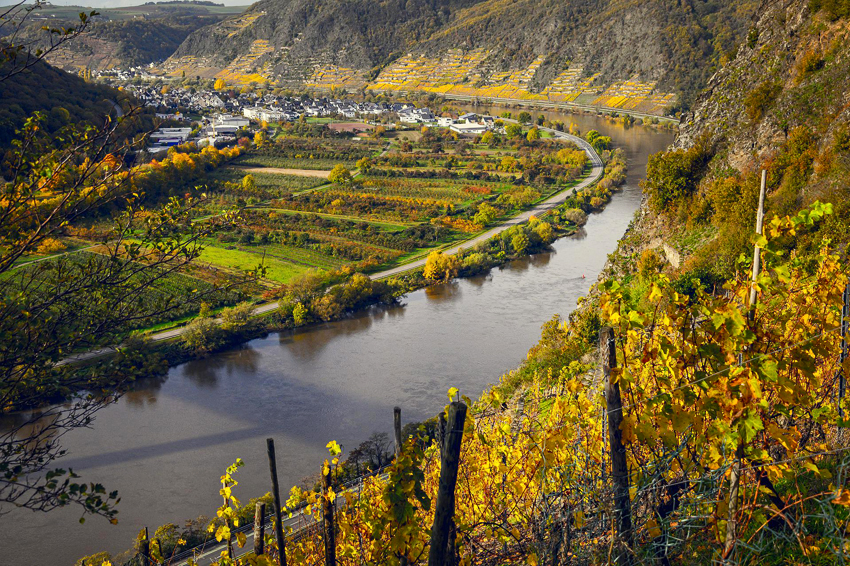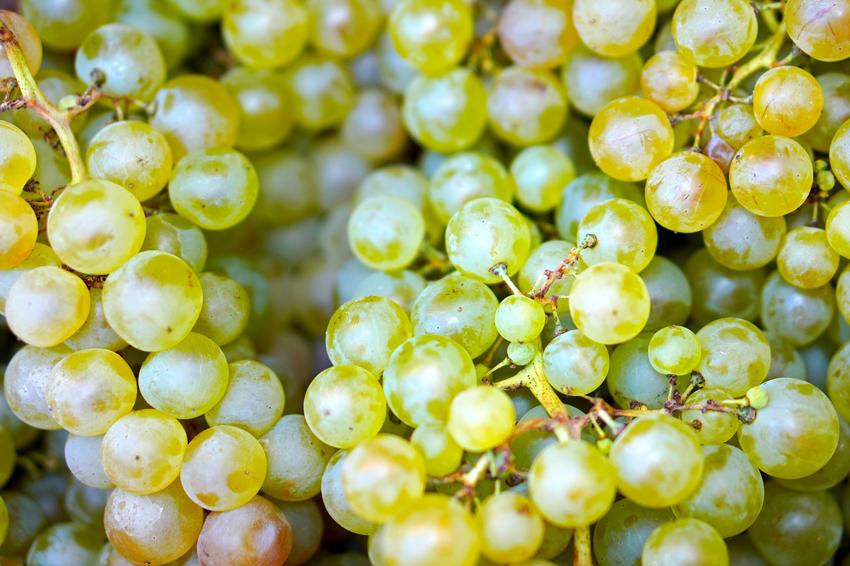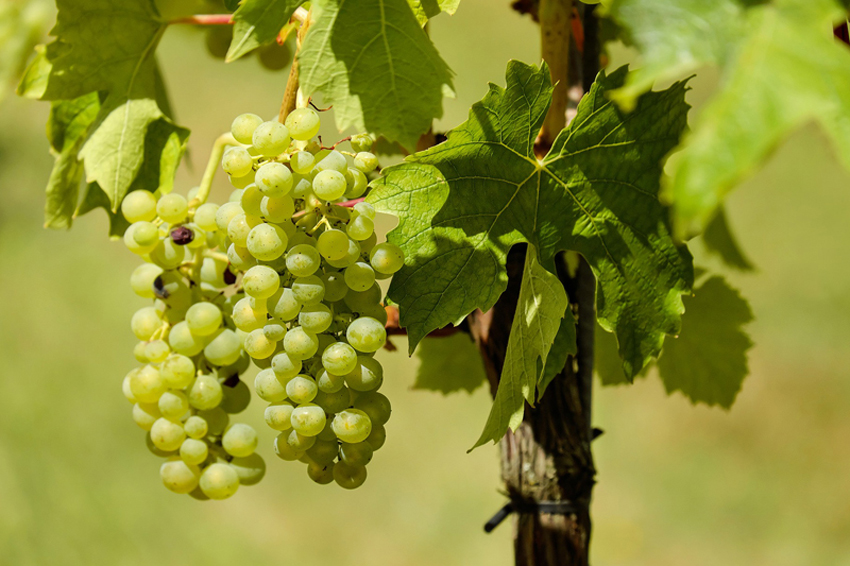Acidity is one of the four key structural components of wine, along with tannin, alcohol and sugar. Acidity in wine comes from the grape juice and gives wine a refreshing, palate-cleansing characteristic. It can be described in many ways such as vibrant, racy, zesty, bright or crisp. All wines will contain varying degrees of acidity, although it is generally higher in white wines than red wines. You can recognise it because it will make your mouth water and salivate, and make the wine taste tart. The balance of acidity is very important; If there is too much or it is out of balance with the other components, then the wine will taste unpleasantly acidic. If the acidity is too low, the wine will taste flat and flabby. A wine can have high acidity and still be perfectly balanced with the other structural components.
Why is acidity important in wine?
Acidity balances the sweetness, tannin, alcohol and fruit character in a wine. A wine maker will choose to harvest their grapes when they have the perfect balance between sweetness and acidity for the style of wine they are creating. Ideally the grapes will be perfectly sweet and ripe whilst retaining enough acidity to make a quality balanced wine. In the Champagne region of Northern France, acidity is extremely important for the wine making process and the finished style of the wines therefore the grapes are often picked early, before they are fully ripe and the grapes are very acidic.
Acid is one of the key elements to help a wine to age and preserve the colour, this is because it acts as a stabilising agent, preventing bacteria from spoiling the wine. Wines with low acid are at higher risk of spoilage, and less likely to age well.
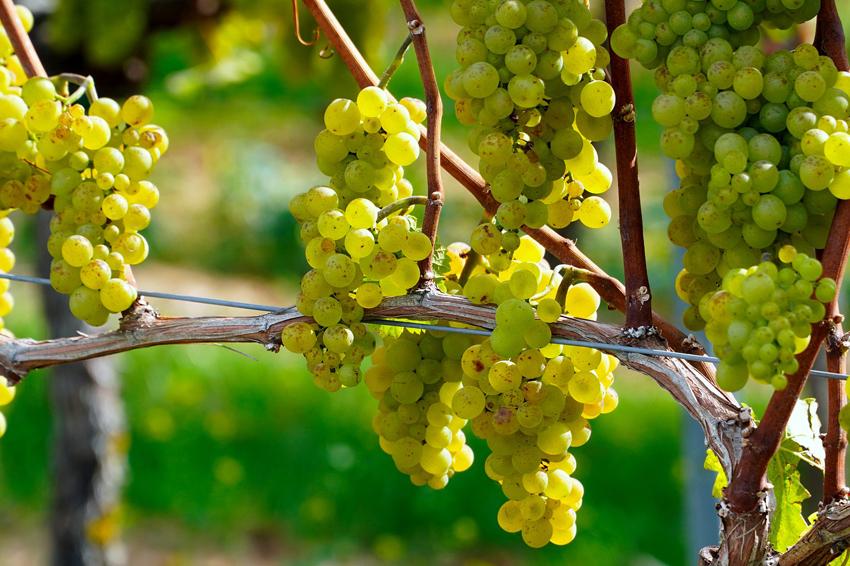

What influences acidity?
Certain grape varieties have a particularly high natural acidity such as Riesling and Sauvignon Blanc. Cool climate regions generally result in higher levels of acidity in the grapes. Acidity levels in grapes fall as the grape ripens and the sugar level increases. Therefore, in cooler areas where there is less sunshine and warmth to ripen the grapes, there will be higher acid and lower sugar. A slow ripening period will preserve acidity. Wines from warmer climates tend to have lower acidity and sometimes acid needs to be added to the wine through a winemaking technique known as acidification which is common practice in the new world.
Pairing high acidity wine with food
What makes a good food and wine pairing is subjective as everybody has their own personal preferences and tolerances so it is difficult to be too prescriptive. Here are a few simple guidelines; Wines with high acidity pair very well with oily or fatty foods as the acidity cuts through the fattiness or richness and cleanses the palate before the next mouthful. This sensation is very satisfying for most palates. For example; Roast Goose with Riesling Spatlese or Wagyu beef with Nebbiolo.
Food with high acidity, such as tomatoes or goats’ cheese, pair excellently with high acid wines. The acidity in both balances or moderates the other and enhances the fruitiness and body of the wine, it makes it taste smoother. For example; Crottin de Chavignol with Sancerre, Fish with a lemony sauce with Albarino.
Salty foods can pair nicely with high acid wines, The acidity can balance the saltiness and bring out the other flavours in the dish which might have been masked by the salt. The salt can also bring out the salinity or minerality in the wine making it taste more refined and elegant.
Avoid sweet dishes with dry, high acid, wines as the sweetness in the food will strip the wine of its fruit character and make the wine taste even more acidic. Instead, pair with a wine with an equal or higher level of sweetness to the dish.
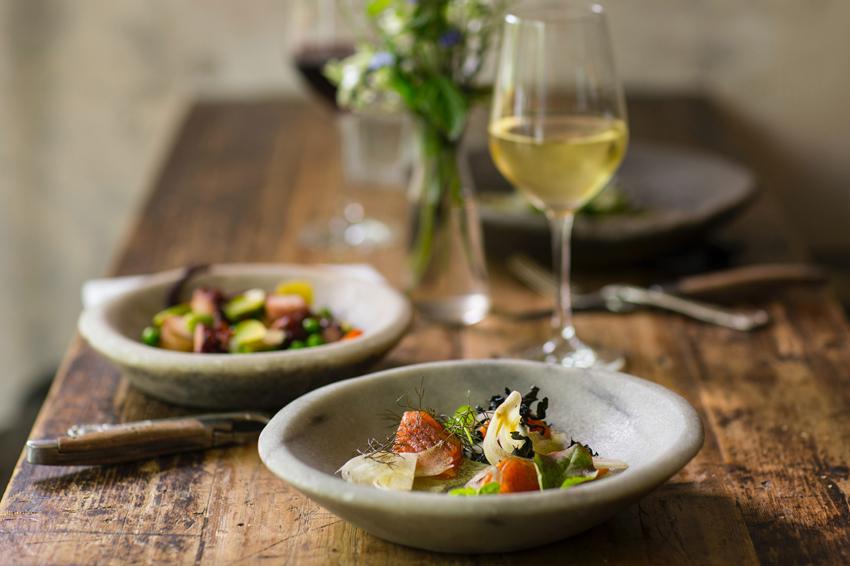

Top 6 wines with notably high acidity


Domaine Wachau Federspiel Riesling, 2020, Wachau, Austria
Domaine Wachau is one of the iconic wine producers of the region, with its terraced vineyards strung along the steep banks of the Danube River on a patchwork of terroirs that provide endless nuance to the Riesling grapes that grow there. The name Federspiel is derived from falconry which was a very popular leisure time activity among the nobility in medieval times. The falcon stands for the remarkable elegance of the wine. The nose displays stone fruit, lime, apple blossom and hints of ripe pear. On the palate there are flavours of juicy white peach and subtle hints of apricot. The wine is well balanced by a refined structure and racy acidity.


Lembranzas Albarino, 2021, Rias Baixas, Spain
Grown in the Rias Baixas sub-region of Galicia in the north-west of Spain, Albarino is a native varietal to the area which is gaining popularity for it`s clean, fresh style and abundance of citrus and stone fruit. If you like Sauvignon Blanc, why not give this a go? Vibrant nose of pear, peach and apricot. Luscious, creamy and silky palate supported by lively acidity and a touch of salinity of the finish. This is as good as Albarino gets!


Langlois-Chateau Sancerre Blanc, 2021, Loire Valley, France
Crafted from 100 percent Sauvignon Blanc, this serious, complex Sancerre wine is handled only in stainless steel, to allow the winemaker to represent the fruit as closely as possible. Lots of gooseberry and passion fruit, with that characteristic flinty, fresh acidity. Vibrant, delicious and recommended. Fresh citrus nose with gooseberry and floral notes. More citrus flavours on the palate with the classic Sancerre herbaceous minerality that makes it stand out. Well-balanced with a very long, lingering finish.


Seguinot-Bordet, Petit Chablis, 2020, Burgundy, France
Located at the top of the slope near the plateau where the combination of limestone and Kimmeridgian clay create bright, vibrant and approachable wines. Enticing aromas of green apple, pear and lemon citrus with a touch of acacia. Crisp and clean with vibrant, racy acidity on the mid-palate with a core of further citrus and green fruit with a dusting of white pepper. Lip-smacking good! Drink this while your Premier Crus mature in the cellar…


Michele Reverdito, Barolo `Castagni` DOCG, 2016, Piedmont, Italy
100% Nebbiolo from the Castagni Cru in the centre-west of La Morra on marl-clay soils. Located next to the Crus of Ascheri, San Giacomo, Neirane and Roncaglie. An abundance of black cherry and black plum fuse with floral notes of violet and iris. This is compact and complex with great structure, yet effortlessly fine and elegant at the same time. A pure, precise and taught Barolo with a seamless, focused finish.


Bertrand Ambroise, Bourgogne Cuvee Vieilles Vignes, 2019, Burgundy, France
100% Pinot Noir from old vines throughout the Cote de Nuits. Aged for 12 months in 400L barrels (of which 10% are new), which produces a bright, focused and pure Bourgogne Rouge... more like a mini Nuits-Saint-Georges! Charming nose of red and black cherry with added bramble and a touch of toasted, smoky oak. Excellent texture on the mid-palate thanks to wonderful purity of fruit. Soft, silky and seductive leading into a further black fruit core with a dusting of white pepper spice on the lingering finish.
Read Part one of our 'Structural components of wine' series: Let's Talk about Tannins.

